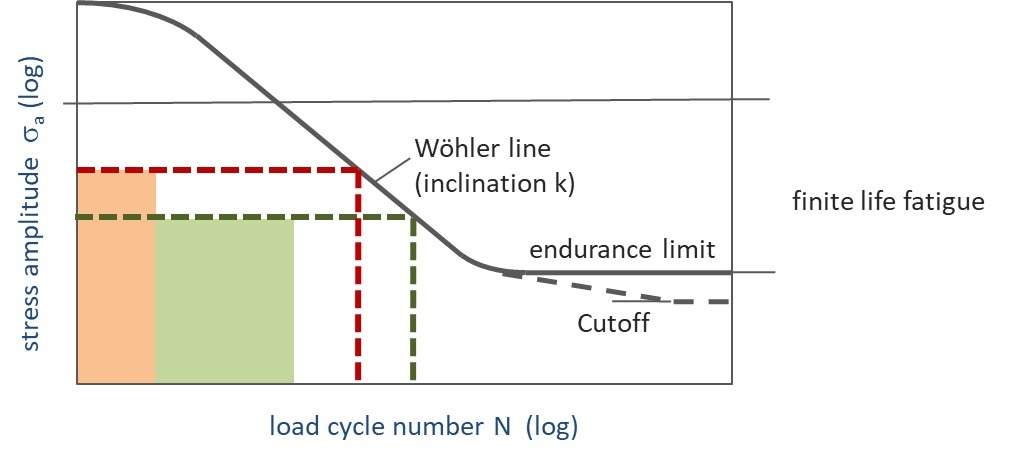Constant amplitude loading with stress levels above the endurance limit cause material damage, crack initiation and, after a limited number of load cycles, failure will occur. Within this range, the S-N curve is approximated using a straight line with the inclination k in the logarithmic Wöhler curve. The finite life fatigue is commonly used in modern structural designs to achieve a desired life time of the product!
If stress levels above the endurance limit occur and cause damage, then the S-N curve usually changes its inclination and all stress ranges above the cutoff level have to be taken into account as well. Stress ranges below cutoff do not contribute to damaging the material. This procedure is available within EC3, FKM and other codes.

In case of measured loading histories or results from multibody dynamics simulations (MBD) the resulting stresses can show strong fluctuations or even random behavior.
In order to determine stress ranges and cycle numbers from random input, counting procedures are used. For this purpose, the LIMIT® fatigue analysis software offers a standard rain flow algorithm which determines stress ranges at different levels and the corresponding load cycle numbers. The stress ranges are ordered by magnitude and can be used to calculate the amount of damage, using the simple Miner damage accumulation rule.
